
I was a teenager during the 1990s, but I never went through a rebellious phase. While my cooler peers were listening to Nirvana and Green Day, I was absorbed in retro mainstream artists like Paul Simon, Billy Joel, and Neil Diamond. New York’s Neil Leslie Diamond’s an interesting figure – he’s simultaneously an introspective songwriter and a housewife pinup a la Tom Jones or Elvis Presley. Author David Wild labels Diamond as the Jewish Elvis and the Hebrew Hunk, while critic Lester Bangs wrote that Diamond writes “great, pretentious, goofy pop” with a melodramatic, “hymn-like feeling”.
Introduction
Diamond started working as a songwriter in the early 1960s, emerging from Brooklyn and then Queen’s College, along with contemporaries Carole King, Paul Simon, Neil Sedaka, Gerry Goffin, and Barbra Streisand, all of who came from a Jewish heritage. He struggled along for years, but when he started experiencing success with songs like The Monkees’ ‘I’m A Believer’, he was given the chance to launch his own solo career. After a couple of albums of fun rock and roll for Bert Berns’ Bang! Records, he switched to MCA Records and after a slow start, scored big hits like ‘Sweet Caroline’ and ‘Cracklin’ Rosie’.
Even in his younger years, Diamond’s material’s often sedate and augmented with lashings of orchestration, and it’s not always relevant to rock and roll fans. He’s not a particularly consistent album artist; his song-writing is limited in scope, and he sometimes relied on covers to pad out his albums. But I thought it would be interesting to revisit his albums after a long time away – he’s a mega-selling artist who doesn’t receive a lot of analysis. At his best, his insecure and sometimes goofy persona fuels some unique pop hits.
I’ve covered Neil Diamond’s studio albums through to 1980’s Jazz Singer soundtrack, as well as his two acclaimed records in the 2000s with Rick Rubin. I’ve skipped over his live albums apart from the iconic Hot August Night.
Neil Diamond Album Reviews
The Feel of Neil Diamond | Just For You | Velvet Gloves and Spit | Brother Love’s Traveling Salvation Show | Touching You Touching Me | Tap Root Manuscript | Stones | Moods | Hot August Night | Jonathan Livingston Seagull | Serenade | Beautiful Noise | I’m Glad You’re Here With Me Tonight | You Don’t Bring Me Flowers | September Morn | The Jazz Singer | On the Way to the Sky | Heartlight | Primitive | Headed for the Future | The Best Years of Our Lives | Lovescape | The Christmas Album | Up on the Roof: Songs from the Brill Building | The Christmas Album, Volume II | Tennessee Moon | The Movie Album: As Time Goes By | Three Chord Opera | 12 Songs | Home Before Dark
The Feel of Neil Diamond

1966, 5.5/10
After years of struggling away as a songwriter, Diamond enjoyed some success with hits for The Monkees and Jay and the Americans. He was offered a recording contract by Bert Berns, from Bang Records, who also oversaw Van Morrison’s early solo career. Bizarrely, for a burgeoning songwriter, The Feel of Neil Diamond is almost 50% covers, with predictable chestnuts like ‘La Bamba’, ‘Hanky Panky’, and Paul Simon’s ‘Red Rubber Ball’ sharing space with Diamond’s originals. They sit comfortably next to Diamond’s own retro, Brill Building pop, but they also feel unnecessary.
The two best-known Diamond originals bookend the album – ‘Solitary Man’ opens and ‘Cherry Cherry’ closes, where it seems they’d have been more effective the other way around. Both of these songs were reused on Diamond’s superior, next album, and the covers are dispensable. So the main points of interest are Diamond’s lesser-known originals, the best of which is easily ‘I Got the Feelin’ (Oh No No)’, a morose song with a chugging verse and triumphant chorus that could have been a hit.
The Feel of Neil Diamond is good harmless fun, but it would have been stronger if it contained less cover versions.
Just For You

1967, 8/10
With the repetition of the two most notable songs from The Feel of Neil Diamond, Just For You feels like a second attempt at a debut album. The covers are gone and instead, it’s an excellent collection of early Neil Diamond tracks presented in his early, energetic Brill Building, rock and roll style.
If you have even a casual interest in Neil Diamond, you probably know half of these songs already. ‘Cherry Cherry’ and ‘Solitary Man’ are repeated from The Feel of Neil Diamond, while the autobiographical, insecure ‘Shilo’ is another Diamond standard. And then there’s a batch of songs that were made famous by other artists – The Monkees had already enjoyed a number one single with ‘I’m A Believer’, while UB40 turned the mournful ‘Red, Red Wine’ into an upbeat reggae smash hit. In the 1990s, Quentin Tarantino used Urge Overkill’s remake of ‘Girl, You’ll Be A Woman Soon’ in Pulp Fiction.
Just For You is clearly an early peak for Diamond, although frustratingly it’s an incomplete summary of his best Bang material, missing songs like the non-album single ‘Kentucky Woman’. It’s never been released on CD and it’s not on Spotify, so you’re probably better off with a compilation of his best Bang work anyway.
Velvet Gloves and Spit

1968, 5.5/10
Diamond’s first album after leaving Bang records wasn’t a commercial success. It was an awkward period for Diamond – his arrangements were becoming more complex than the fun rock and roll of his Bang years. But his songs on Velvet Gloves and Spit are mostly simple compositions, slowed down and given grandiose orchestral arrangements, and they struggle to bear the weight. The album’s best-known song was added later – the introspective ‘Shilo’ was on his second Bang record, but when Bang belatedly released it as a single in 1970, Diamond responded by re-recording the song and including it on an eleven-track re-issue of Velvet Gloves and Spit.
The most memorable song here is the unfortunate ‘The Pot Smoker’s Song’, in which Diamond plays interviews of recovering marijuana users accompanied by a ‘La Bamba’ clone so upbeat it’s difficult to tell if Diamond is sincere or satirical. Elsewhere, Diamond’s drifting close to show tunes on ‘Honey-Drippin’ Times’ and the preposterous and overblown ‘Knackelflerg’. Outside of ‘Shilo’ on the 1970 reissue, there aren’t any well-known singles, but there are some strong obscure singles buried here. ‘Two-Bit Manchild’ successfully mixes a 1960s pop sound with introspective lyrics, while the more autobiographical and complex ‘Brooklyn Roads’ is another loved track, although the overbearing orchestration is distracting.
The contents of Velvet Gloves and Spit fail to match the excellence of the album title, despite signs of growth from his Bang years.
Brother Love’s Traveling Salvation Show

1969, 6/10
Neil Diamond’s second album gave him a higher commercial profile – the title track went to number 22 on the charts and it’s far stronger than anything on Velvet Gloves and Spit. Two months after the initial release of Brother Love’s Traveling Salvation Show, Diamond had a huge hit with ‘Sweet Caroline’ and it was added to later pressings of the album.
The iconic singalong of ‘Sweet Caroline’ and the hoarse gospel of the title track overshadow the rest of the tracks handily. The best of the rest include ‘Glory Road’, another heavily orchestrated song with a pretty tune that may have sounded better in a stripped-down version, and the impressionism of ‘And The Grass Won’t Pay No Mind’, also recorded by Elvis in 1969. Diamond takes some stabs at country, and they’re unconvincing; ‘Long Gone’ is a dopey singalong, while ‘You’re So Sweet, Horseflies Keep Hanging Around Your Face’ is silly. The groovy organ on the retro ‘River Runs, New Grown Plums’ is fun, as is the soul feel of ‘Memphis Streets’, but like a lot of Brother Love’s Traveling Salvation Show, it feels like tuneful but second-tier Diamond material.
Neil Diamond was releasing albums at a rapid rate at this point, to the point where he was diluting quality control. Take the best songs from this album and the best originals from his other 1969 album, Touching You, Touching Me, and you’d have one of his strongest records.
Touching You, Touching Me
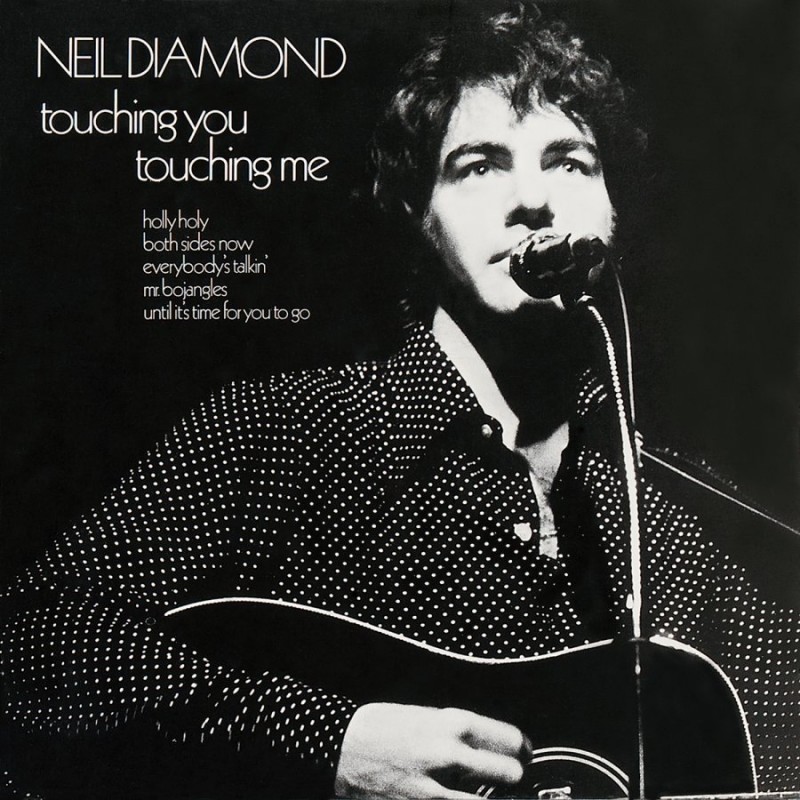
1969, 7/10
Neil Diamond’s second album of 1969 found him light on new material – as a result, it’s half comprised of covers. Despite the album title coming from the lyrics of ‘Sweet Caroline’, that song only appeared on the UK edition of the album.
While Diamond’s covers on his debut were largely superfluous, these are much stronger – ‘Mr. Bojangles’ is offbeat enough to feel like a Diamond composition, while his gravelly voice works well for ‘Everybody’s Talkin”. Touching You, Touching Me is tougher sounding than his previous Uni records, especially his vocal performances.
Touching You, Touching Me contains my favourite Neil Diamond song, ‘Holly Holy’, another foray into gospel where he growls his way through the chorus: “Touch a man who can’t walk upright/ And that lame man, he’s gonna fly”. ‘And The Singer Sings His Song’ is lovely, although it’s another pretty Diamond song that might have sounded better unadorned by orchestration. ‘Smokey Lady’ and ‘Ain’t No Way’ are slight but energetic, bringing back shades of his Bang work. The album closes prettily with Diamond’s version of Buffy Sainte-Marie’s ‘Until It’s Time For You To Go’.
It’s heavy on covers, but Touching You, Touching Me is still effective, a fine close to the 1960s for Diamond.
Tap Root Manuscript

1970, 7.5/10
“Experimental” and “exploring African rhythms” aren’t phrases that you expect to read about a Neil Diamond album, but Diamond pushed his musical boundaries on 1970’s Tap Root Manuscript. The second side of the LP is given over to a suite of African songs, a “folk ballet” about man’s three stages of life. Despite the ambition of the second side, and the excellent centre-piece ‘Soolaimón’, it’s the first side that’s the stronger.
Tap Root Manuscript opens with one of Diamond’s finest hit singles ‘Cracklin’ Rosie’, an upbeat song that playfully draws metaphors between personified wine and a prostitute. ‘Coldwater Morning’ is a terrific deep cut, with Diamond contrasting moody verses with a triumphant chorus, dramatically hitting high notes, while ‘Done Too Soon’ is a list song of early demises. Among all the creativity, the cover of The Hollies’ ‘He Ain’t Heavy, He’s My Brother’ is a staid choice, but it does feature a great Diamond vocal.
Side one might be the strongest studio side in Diamond’s discography, but the second side is far more adventurous. The African suite is largely instrumental, with Diamond’s only vocals on the bizarre ‘I Am The Lion’ and on ‘Soolaimón’. There’s a children’s choir on the opening ‘Childsong’, and along with ‘I Am The Lion’, the suite gets off to an awkward start. But ‘Soolaimon’ is an excellent payoff, the African rhythms and gospel organ coalescing into something special. It’s also worth noting than Diamond was one of the first western pop artists to explore African sounds, well ahead of Joni Mitchell, Peter Gabriel, and Paul Simon.
There are some bizarre missteps here, but Tap Root Manuscript captures some of Diamond’s most creative and accomplished work.
Stones

1971, 5/10
Stones comprises of three first-rate Neil Diamond compositions, padded out by a bunch of disposable covers. While Diamond’s distinctive voice can make for worthwhile covers, here the choices are predictable late 1960s fare. Diamond’s voice and the overwhelming bursts of orchestration don’t work for Joni Mitchell’s ‘Chelsea Morning’, while he doesn’t add anything to Leonard Cohen’s ‘Suzanne’ or Tom Paxton’s ‘The Last Thing on my Mind’.
On the other hand, the three originals are among Diamond’s very best songs. ‘I Am…I Said’ is perhaps Neil Diamond’s quintessential song, matching existential musing with supreme awkwardness; “And no-one heard at all/Not even the chair”. The electric guitar and horn fuelled ‘Crunchy Granola Suite’ is one of Diamond’s most lovably bizarre efforts, apparently an effort from Diamond to improve listener’s eating habits after embracing healthy food, while the title track is pretty and gentle.
The originals would have made a fantastic EP, but the covers make Stones a monotonous album.
Moods
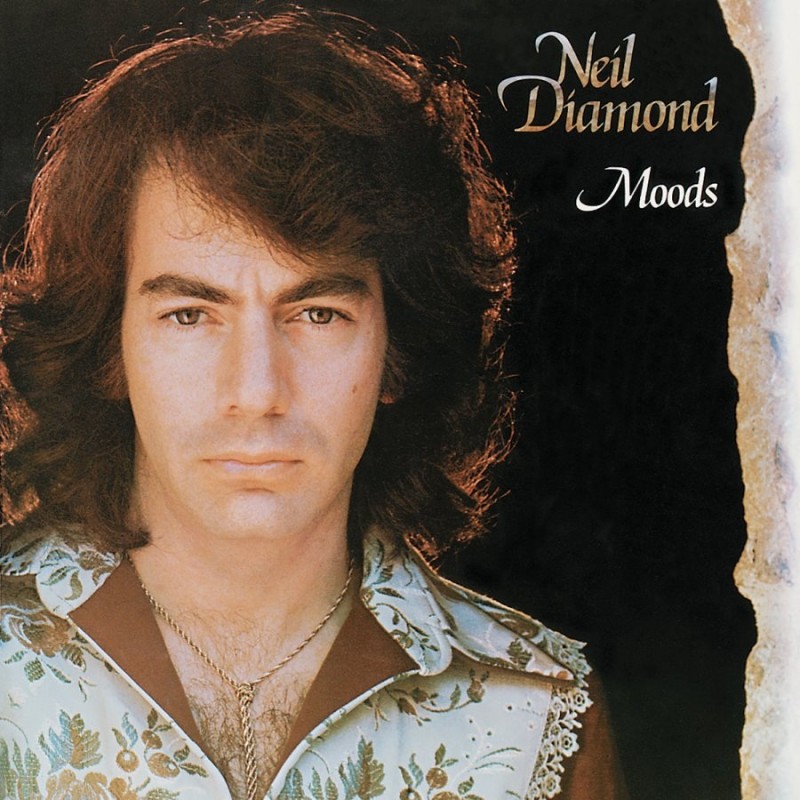
1972, 8/10
I wasn’t expecting much from this record – its two best-known songs, ‘Song Sung Blue’ and ‘Play Me’, are two of my least favourite Neil Diamond standards from his prime, too close to sentimental easy listening for my liking. But Moods is one of Diamond’s most solid albums, consisting entirely of originals. It’s totally mellow, with lots of keyboards and acoustic guitars, but the orchestration is more restrained than on previous Uni albums.
Even though I don’t overly enjoy the saccharine singalong of ‘Song Sung Blue’, I like the pretty Fender Rhodes introduction, while the romantic, well-crafted ‘Play Me’ is notable for smoothly introducing the work “brang” into the English vernacular. But the album’s strength is the abundance of solid album tracks. ‘Walk On Water’ is another successful foray for Diamond into gospel, simmering for ages before hitting the payload, a triumphant chorus with driving, pretty piano. The most ambitious piece is ‘Canta Libre’, largely in Spanish and flirting with lite opera.
Of all Diamond’s Uni albums, Moods is the most straightforward, simply a collection of well-crafted songs with no overriding concept and minimal strings. Diamond, however, would have much loftier goals for his next studio project.
Hot August Night
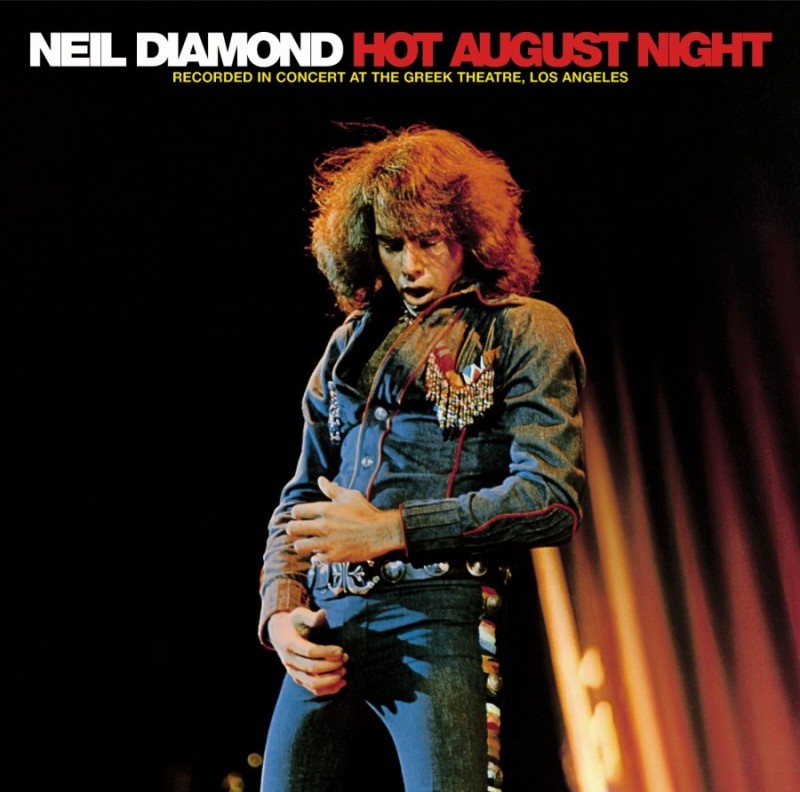
1972, 8.5/10
Diamond’s best-known full-length record is this 1972 live album, named for a line in ‘Brother Love’s Travelling Salvation Show’. It was phenomenally popular in Australia where it’s reputed to have sold more than one million copies, a ridiculous degree of market penetration given that Australia only had a population of 13 million at the time. It came out at the ideal time in Diamond’s career – his Uni albums had been inconsistent, but had contained a good number of crowd-pleasers, and Diamond unerringly picks out his best material for this live set.
It’s rare that I prefer a live album in an artist’s discography, but Diamond benefits from the band feel on this live disc; there’s more guitar than on his studio records, as well as rawer vocals. He’s also backed by a string section, but they’re less overbearing than his studio recordings, just adding depth and colour. There are at least three different versions of Hot August Night – I’m accustomed to the LP version, but the 2000 CD release adds three further songs, which are welcome. I’m less impressed by the extra additions on the 2012 anniversary edition, which adds the less essential ‘Modern Day Version of Love’ and ‘I Think It’s Going To Rain Today’.
Diamond’s vocals are at their best here on ambitious material like ‘Canta Libre’ and the opening of ‘I Am…I Said’, where he’s backed only by the strings. The oddest selections are the dopey country songs like ‘You’re So Sweet’ and the otherwise unavailable ‘Soggy Pretzels’. There’s a sleepy section at the start of the second disc, where he plays sleepy material from Moods, his most recent album, including ‘Play Me’ and ‘Song Sung Blue’, but Hot August Night gathers momentum again for a triumphant conclusion where he reels off five of his greatest songs in a row.
As you’d expect, Hot August Night is kitsch and faintly ridiculous, but it’s a great one-stop-shopping solution for Diamond.
Jonathan Livingston Seagull

1973, 4/10
After years of fruity pop songs, Diamond signed to CBS Records, and suddenly had delusions of grandeur. His first project was composing the soundtrack for an uplifting New Age film about a seagull. A handful of new Neil Diamond songs are surrounded by lush orchestration, which often restates the melodic motifs from the vocal songs. The film itself was a flop, while the soundtrack was a commercial success in the wake of Moods and Hot August Night, perhaps hoodwinking people into thinking Diamond was highbrow. But Jonathan Livingston Seagull shares the weakness of other primarily instrumental soundtrack albums – that in between the songs, the music’s primarily designed as the backdrop for the film. It’s pretty, but I’ve never understood why a listener would prefer an orchestral film soundtrack to a fully conceived work by Mahler or Mozart.
Among all the instrumental pieces, there are vocal songs – the most notable of which is ‘Be’, which is a lovely, soaring piece. While some of Diamond’s earlier work suffered from having orchestration lathered over the top of simple songs, here his meditative and spiritual tunes are much better suited to the orchestration. But overall, the paucity of vocal songs is frustrating, and the following year’s Serenade is a better source of orchestrated Diamond.
Jonathan Livingston Seagull is beautiful, and the cover probably looks great on LP, but it often feels like four songs stretched over an LP running time.
Serenade

1974, 7.5/10
Diamond continued with the spiritual and heavily orchestrated direction of Jonathan Livingston Seagull, but with a set of fully-fledged songs. The languorous pace of most of these songs fits Diamond’s voice, and these songs, often full of religious references are generally successful. It’s reminiscent of former label-mate Van Morrison’s work, although Diamond doesn’t have Morrison’s blues and folk influences, or vocal improvisation skills, so Serenade veers dangerously close to adult contemporary.
It can be difficult to make this type of record work – either you get a slow, monochromatic album that is monotonous, or you break it up with some faster songs that stick out like a sore thumb. Diamond opted for the latter, and ‘Reggae Strut’ is an embarrassment – a piece of cod-reggae where he affects a faux-Jamaican accent. He also primly pronounces the phrase “oh yes”; surely a casual “oh yeah” would have fitted better. Of the other upbeat material the single ‘Longfellow Serenade’ is much stronger, like an orchestrated rewrite of ‘Cracklin’ Rosie’.
The core of Serenade is the ambitious, orchestrated pieces, which are often beautiful. My favourites are the lengthy ‘Lady Magdalene’, dripping with religious imagery, and ‘Yes I Will’, which has some of Diamond’s best lyrics, without a trace of goofiness; “and baby if I had the answers I would lay them all before you; plainly it’s a circle, one that ends and then begins, and begins again.”
If you can stomach Diamond’s mysticism and the slow tempos, there’s some of his most accomplished writing on Serenade.
Beautiful Noise

1976, 7.5/10
Neil Diamond’s stated that he’s his own genre, not fitting in anywhere, and often he uses his own set of musicians and producers that don’t crossover to other records in my library. But Beautiful Noise is the exception; Diamond befriended his Malibu neighbour Robbie Robertson, from The Band, which culminated in Robertson producing this album and Diamond appearing on The Band’s The Last Waltz. Robertson’s participation is highlighted on the cover, unusual for a producer and pointedly giving this record bonus credibility. Robertson doesn’t alter Diamond, but brings in extra elements that aren’t usually on Neil Diamond albums; Diamond’s usual band shares space with session musicians like David Paich, Jim Gordon, and Larry Knechtel. Dr. John appears on organ, along with The Band’s Garth Hudson, while Robertson plays guitar on three tracks.
So while the result is identifiable as Neil Diamond, it’s more eclectic than usual. Typical mellow ballads like ‘Lady-Oh’ and ‘Home Is A Wounded Heart’ share space with more diverse fare like the fast-paced rock and roll of ‘Jungletime’ and the more convincing attempt at reggae on ‘Don’t Think…Feel’. Robertson has a co-write on the closing song, the brooding ‘Dry Your Eyes’, but the album’s best song is more conventional Diamond fare, the soaring chorus of ‘If You Know What I Mean’. According to Diamond, it’s a recollection of an encounter in his teens with a significantly older woman.
For my money, Serenade and Beautiful Noise are the two strongest consecutive albums in Neil Diamond’s discography – it’s a shame he’d retreat from challenging himself with his next record.
I’m Glad You’re Here With Me Tonight

1977, 3/10
After some ambitious mid-1970s efforts, Diamond abruptly abandoned all interest in challenging himself on 1977’s I’m Glad You’re Here With Me Tonight. He retreated to safe territory, an album of smooth adult contemporary ballads, book-ended by two covers. His opening take on The Beach Boys’ ‘God Only Knows’ is a particular disappointment – it’s a beautiful song, but Carl Wilson sang it so well that other attempts are superfluous, and Diamond simply drags out the length.
As a rock fan, most of this material is uninteresting, although the second side is far stronger than the first. The side two opening of ‘Lament in D Minor’ and ‘Dance of the Sabres’ is the only real sign of creativity. The lead single, ‘Desiree’, another reminiscence about a teenage rendezvous with an older woman, like ‘If You Know What I Mean’ from the previous record, is energetic enough to be entertaining, with its dramatic strings. The closing cover of Joni Mitchell’s ‘Free Man In Paris’ pushes surprisingly close to progressive rock with its vibrant strings and guitars – it’s over the top, but it’s at least entertaining after the snooze-fest on side one. This record’s also notable for the original, Diamond-only version of the manipulatively mournful ‘You Don’t Bring Me Flowers’.
There are moments of entertainment on I’m Glad You’re Here With Me Tonight, but it’s difficult to overcome the adult contemporary stupor of the first side.
You Don’t Bring Me Flowers

1978, 4.5/10
In 1978, Barbra Streisand recorded her own version of ‘You Give Me Flowers’. An enterprising disc jockey spliced the two versions together as a divorce present to his ex-wife, and his version received air-play, a 1970s mashup. Diamond and Streisand convened to record an official duet, providing the often-derided title track for this album. Despite the nature of the title track and of the adjacent albums in Diamond’s discography, You Don’t Bring Me Flowers isn’t the adult-contemporary morass you’d expect, mostly comprised of mid-tempo pieces. It wanders uncomfortably close to the disco at times, and it’s overly slick and lacking in personality, but it’s preferable to wading through an entire album of smooth romantic balladry.
The album starts surprisingly strongly with ‘American Popular Song’ – the album was originally planned as a double album with that song providing the central conceit – and Diamond’s best single from the late 1970s, ‘Forever In Blue Jeans’ (often misheard as “Reverend Bluejeans”). The rest doesn’t match up to the beginning – it’s certainly unimaginative opening the second side with ‘Dance of the Bumblebee’ after the previous record’s flip-side started with ‘Dance of the Sabres’. The low points are the Streisand duet on the title track and the disco closer ‘Diamond Girls’.
You Don’t Bring Me Flowers is part of Diamond’s late 1970s lapse into auto-pilot adult contemporary, just more energetic than usual.
September Morn

1979, 1.5/10
Diamond’s previous two albums weren’t impressive, but he plumbs new depths with 1979’s September Morn. When he’s not playing sappy adult contemporary, he’s dabbling in awkward mature disco. Additionally, his song-writing is clearly struggling as half of these songs are covers and most of the others use a co-writer. The only exception is an awkward bossa nova tinged revisit of Diamond’s Monkees hit ‘I’m A Believer’.
The 1979 remake of ‘I’m A Believer’ is poor, but it outshines Diamond’s disco cover of ‘Dancing In The Street’, a contender for the worst track he ever recorded. The title track is probably the best written of Diamond’s originals on September Morn, but it’s also sentimental adult contemporary slush. ‘Mama Don’t Know’ starts promisingly but descends into a melodramatic bridge. The most salvageable song is an inessential but respectable cover of The Walker Brothers’ ‘The Sun Ain’t Gonna Shine Anymore’.
I’m not planning to listen to all his 1980s and 1990s albums to verify, but September Morn is probably a career low point.
The Jazz Singer

1980, 7/10
In 1980 Diamond starred in a remake of Al Jolson’s The Jazz Singer, with Sir Laurence Olivier playing his father. The movie was a flop and Diamond won the first-ever Golden Raspberry award for Worst Actor. The soundtrack was a success, however, and stands as Diamond’s best-selling studio record. Diamond suddenly (and temporarily) emerges from his adult-contemporary stupor – while half of these songs are ballads, they sound much better when they’re surrounded by rock and roll songs that recall his Bang recordings. They at least recall his Bang recordings in energy and succinctness- they’re often given a 1980s sheen, like the synth hook of ‘America’. But overall The Jazz Singer is the most consistent, accessible Diamond album since Moods in 1972.
The best of the ballads is ‘Love On the Rocks’ – Diamond’s vocal is surprisingly gritty and it gives a routine ballad some emotional wallop. But the album’s strength is the plethora of uptempo pieces to balance the ballads – ‘On The Robert E Lee’ pushes into the territory of The Band with its old-time feel and subject matter, while songs like ‘You Baby’ and ‘Amazed and Confused’ are energetic and enjoyable.
It’s not quite as strong as his highlights earlier in his career, but The Jazz Singer is a surprisingly robust comeback after a series of poor records.
Neil Diamond: 1981-2001
I’ve skipped over the following albums – if I’m missing out on anything good, write in and let me know. But I’m expecting a whole lot of toothless adult contemporary in his 1980s albums, and a whole lot of nostalgia on his 1990s albums:
On the Way to the Sky (1981)
Heartlight (1982)
Primitive (1984)
Headed for the Future (1986)
The Best Years of Our Lives (1988)
Lovescape (1991)
The Christmas Album (1992)
Up on the Roof: Songs from the Brill Building (1993)
The Christmas Album, Volume II (1994)
Tennessee Moon (1996)
The Movie Album: As Time Goes By (1998)
Three Chord Opera (2001)
12 Songs

2005, 6.5/10
Neil Diamond had effectively been a nostalgia act for years – most of his 1990s output was given over to Christmas albums and covers from movies and the Brill Building. Diamond collaborated with producer Rick Rubin, who’d cut his teeth on rap records in the 1980s and previously worked on Johnny Cash’s late-period material, and Rubin gave Diamond the crispest production and coolest backing band of his career. Diamond’s acoustic guitar is more prominent than it had been since the early 1970s, and he’s backed by great musicians, including the last recording sessions of organist Billy Preston. Roger Joseph Manning Jr from Jellyfish is on piano, and Mike Campbell and Benmont Tench from Tom Petty’s Heartbreakers are also featured.
There are specific archetypes for dignified records from ageing stars, and 12 Songs is true to them. It’s less melodically exuberant than Diamond’s best-loved work, the vocals are often hushed and nearly spoken, and it’s personal. This mode is especially interesting for Diamond, as he hadn’t made such a personal album like this before – the moments of confession would always be balanced by cover versions or commercial sounding songs. This type of record isn’t always fun to return to – it’s most interesting for hearing Diamond’s stories. The most memorable song in his statement of purpose on ‘Hell Yeah’; “Still I think about myself/As a lucky old dreamer”. Other highlights include the surprisingly nasty and direct ‘Face Me’ and the lusty ‘Delirious Love’, like a mature take on his Bang records.
Like most albums from aging rock stars, 12 Songs doesn’t have the melodic or vocal power to want to revisit often, but it’s lovely to see Diamond given dignified arrangements and production.
Home Before Dark
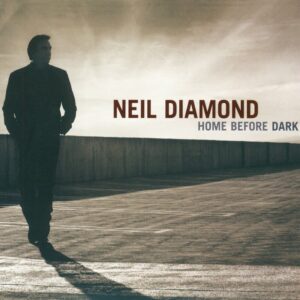
2008, 7/10
Diamond reunited with Rick Rubin for 2008’s Home Before Dark. It’s a repeat of the dignified sound of 2005’s 12 Songs, but with prettier tunes and more diversity. Backing musicians like Benmont Tench and Mike Campbell are back from 12 Songs, joined by new faces like Matt Sweeney and Dixie Chicks’ Natalie Maines. Lyrically, Home Before Dark was inspired by Diamond’s partner’s struggles with chronic back pain.
Diamond’s duet with Maines on ‘Another Day (That Time Forgot)’ is inevitably an improvement on his more famous duet with Barbra Streisand, with restrained harmonies and pretty piano. But Diamond’s at his best on the acoustic elegance of songs like ‘Pretty Amazing Grace’ and the title track; if he’d employed these dignified arrangements earlier in his career, he’d enjoy more respect. The simplicity of ‘One More Bite of Apple’ recalls his Bang years. The biggest weakness of Home Before Dark is long-running times – 12 tracks run over an hour – but improbably it’s an improvement on 12 Songs.
Diamond earned more respect from his late-career resurgence on Home Before Dark, but immediately reverted to cash-ins. Subsequent albums from Diamond include the third instalment of Hot August Night and A Cherry Cherry Christmas, featuring a cover of Adam Sandler’s ‘The Chanukah Song’.
Ten Best Neil Diamond Songs
Holly Holy
Brother Love’s Traveling Salvation Show
I Am…I Said
Solitary Man
Cracklin’ Rosie
Soolaimón
Walk On Water
Cherry Cherry
If You Know What I Mean
Lady Magdalene
Back to 1960s album reviews…..
33 Comments
Leave a Reply
Related Pages
Review Pages
Read about the discographies of musical acts from the 1960s to the present day. Browse this site's review archives or enjoy these random selections:
Blog Posts
I add new blog posts to this website every week. Browse the archives or enjoy these random selections:
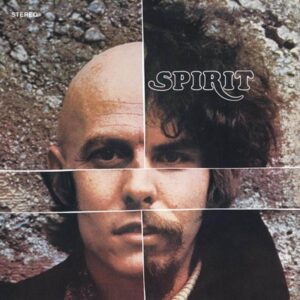
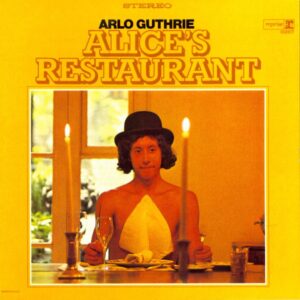
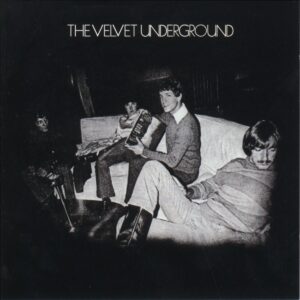

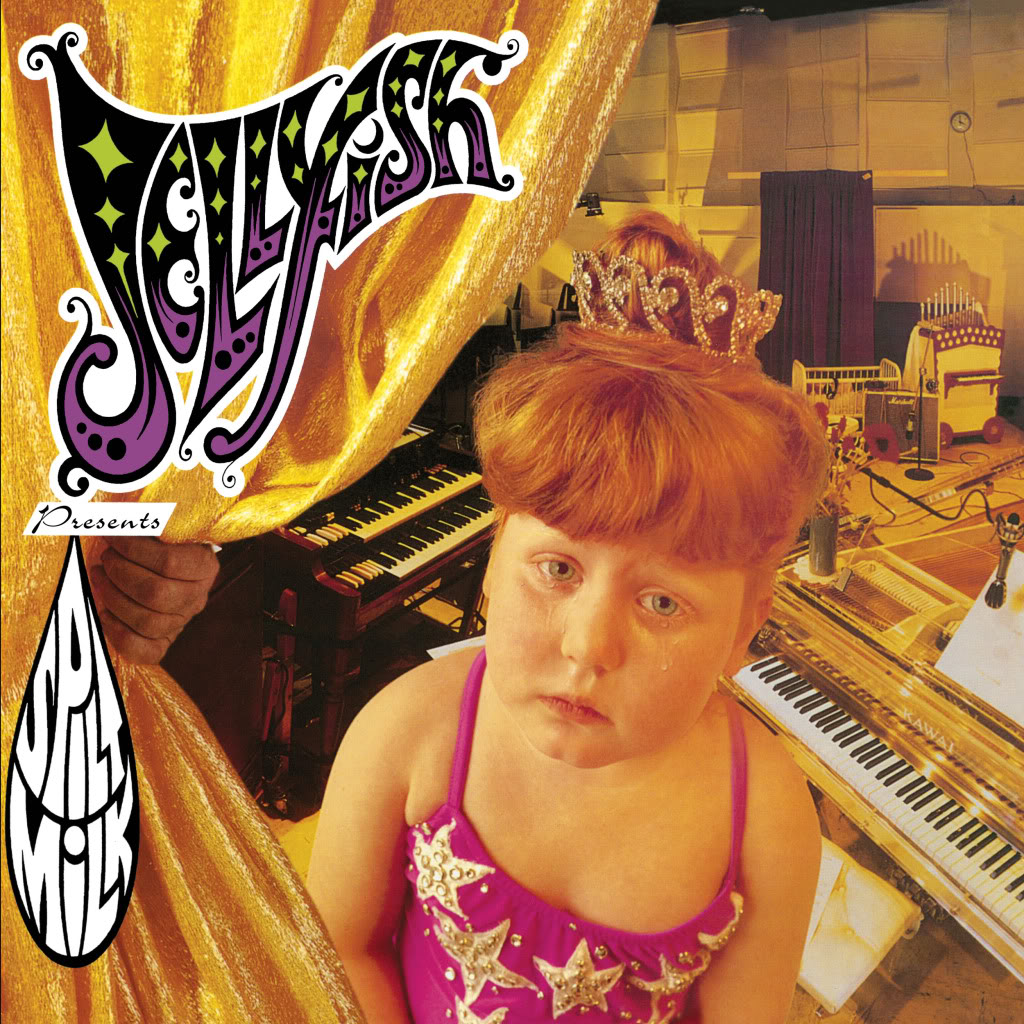



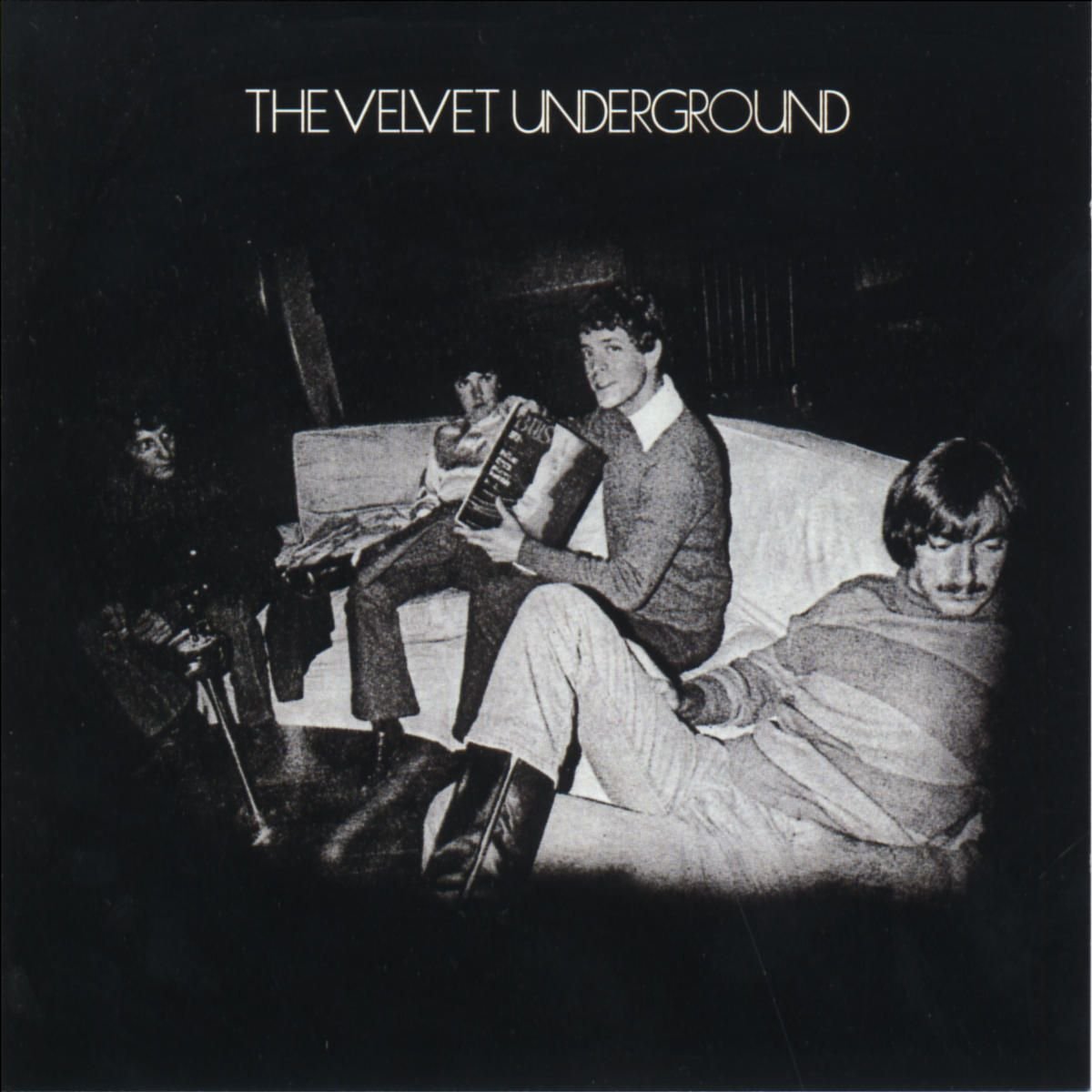



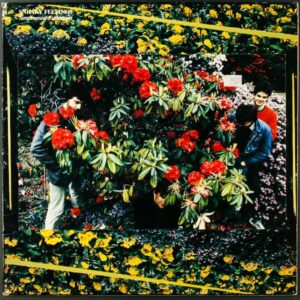




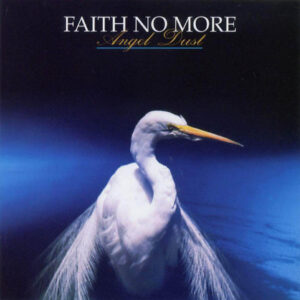





Rebel indeed to be listening to Diamond, or even know about him, in the 1990s. Pretty comprehensive set of reviews! Keep up the good work!
I figured he needed some attention – I like him.
I think Tennessee Moon deserves to be reviewed here. In my opinion, one of Neil’s most overlooked albums and strongest collection of songs in years, before 12 Songs and Home Before Dark. And Melody Road is great too.
I agree that he never really made a good album, but when you put all his best songs together it’s pretty impressive. I’m talking about the period from the mid-60s through the early-70s. Not surprisingly his best songs are the hits. And any of the best ofs covering this period really show how good he could be when everything came together for him. 12 Greatest Hits is particularly good since it contains every one of his strongest songs. When you put all his best songs all in a row like that you think he was one of the major songwriters of that era.
He would have a much better discography, especially in those 1968 to 1972 years, if he cut the superfluous covers. I think he generally got better at albums in the mid 1970s, even when the individual songs weren’t as strong.
I wouldn’t agree to the statement, Neil never had a real good album.
If you look at Serenade and Beautiful Noise, with the exception of maybe one or two songs, these albums are on an exceptionally high level, with every song being a small masterpiece. In fact, I would include Jonathan Livingston Seagull as well. Then also Hot August Night with fantastic live versions of his greatest hits.
So that already makes it four….
Looks like we generally agree where the best albums are, although I’d take Moods over Jonathan Livingstone Seagull.
Yeah. Some of his best songs were from the mid-seventies like Forever in Blue Jeans and Longfellow Serenade and If You Know What I Mean and even You Don’t Bring me Flowers I kinda like in the duet version.
I really enjoyed reading through these reviews. I think Melody Road, Three Chord Opera and The Best Years Of Our Lives deserve a review. It’s staggering to think about the dive of quality following Beautiful Noise. A real pity given the potential that Serenade and BN showed. The three records to follow were really poor, although I actually have a preference to September Morn out of the three. Personal preference I guess. Great stuff.
Planning to do some Neil Diamond reviews on my YouTube channel TIJ Music at some point, so come along if you like the sound of that.
Thanks for writing in! Sounds like we’re mostly on the same page with these.
I too am a closet Neil Diamond appreciator.
I don’t know how “closet” I am, given that I have a web page about it….
You are the only blogger to have Neil Diamond and Ariana Grande. Maybe I am the only one to have The Sex Pistols and The Archies!
I like the Sex Pistols and the Archies. By way of contrasts, I have the Dead Kennedys and Sinatra (Nancy and Frank) in my collection too.
I love those food pics on your blog. They make me very hungry. For some reason I am am unable to leave a comment so I’m doing so here!
Thanks very much. That’s a bit weird re the comments as the odd comment filters through, most of them flogging herbal viagra. Not eating many nice meals that need photographing at the moment sadly. A good food pic will always make me dribble a bit (in a good way).
I sometimes take pics of my own culinary creations, though.
…as opposed to restaurant ones.
Thanks for this rundown. I grew up knowing most of Diamond’s big songs, such as Sweet Caroline and song Sung Biue, which are so familiar that it’s difficult to think about them critically. For me his best song was Cracklin’ Rosie. Not a big fan of the sappy romantic stuff which gets a bit samey after a while. You’re right about I am the Lion – that is totally bizarre but it made me laugh. He would have been better I think to put out fewer albums with more quality control and ditch the covers. I’ve been amazed by how good and varied some of his early stuff was. I knew nothing of his gospel phase and now Holly Holy is my favourite too.
Thanks for writing in! I think halving his album output would have helped his legacy – it’s probably fitting that his best-loved record is a live album.
I think the business model for music was different then and he was probably under a lot of pressure to keep churning out the albums. It’s a pity he didn’t have a year or two to expore either the gospel or African themes. But HAN is a great live album and contains most of his best songs. I have a soft spot for Longfellow Serenade, but apart from that I don’t like that much of his later stuff. I think he’s an artist we appreciate for the songs. I’ve been enjoying Cracklin’ Rosie for many years now and will always enjoy that.
Yeah, it would have been cool if he’d made a gospel album – his take on gospel is pretty idiosyncratic, not surprising when he’s Jewish. I thought Serenade and Beautiful Noise were strong stabs at more mature albums, but he just jumped into predictable adult contemporary after that.
I like his take on revivals/evangelicals in BLTSS. I just wonder if after HAN he went into his domestic phase, cusioned by being successful and stopped touring hokey little towns where expereinces that inspired the gospel stuff and Cracklin’ Rosie happened. I guess happy times with the kids etc was pleasant, but not great material.
I think the drop-off was a little later – like in 1976 he’s hanging out with Robbie Robertson and playing in the Last Waltz, and in 1977 he’s churning out formulaic adult-contemporary.
You know Graham, even though your blog name has the words “Album Reviews” in it, I”ve never really explored many of them, esp the earlier stuff. 🙂 But followed the link from the Nuggets section to 1960s reviews and decided to check out Neil. Very nice job going through them all (or most anyway). I have a soft spot for Neil as he was one of the first artists I got into as a pre(pre)teen – got one of the greatest hits and always liked the melodies and songwriting. And my wife’s a big fan. Seen him a couple times in concert, including his last tour a few years ago before he retired – what was amazing was that even though he could barely move around the stage, his voice was still spot on. There is something magic (if a bit cheesy admittedly) of having 20K people singing along to Sweet Caroline (so good, so good, so good.). 🙂
I got into him around that age too. I think the best part of my site is covering mainstream items like Carole King and Neil Diamond who sometimes miss out on attention.
Great reviews. I also was into Neil Diamond (& other older stuff) rather than the typical rock, though I grew up in the 2000s rather than the 90s. The only good songs of his that I know from the albums you skipped are ‘On the Way to the Sky’, which you might find too adult-contemporary-ish, and ‘Everything’s Gonna Be Fine’ which is much more fun and upbeat, though a bit over-the-top. I love them both, but I also love his version Free Man in Paris, and even I Am the Lion, so we don’t agree on everything! Mostly you’re spot on though.
Thank you! I don’t know if I’ll ever get to another Neil Diamond record but thanks for the recommendations.
If Neil Diamond wrote only one song, Holly Holy, he would be among the best. If you’ve ever been through serious PT and heard/inspired by ‘touch a man who can’t walk upright and that lame man he’s gonna fly’ you will get it.
Hello, Been a Neil fan forever it seems and I appreciate and agree with you assessment for the most part. But as always, different songs and albums touch different people in different ways and for different reasons. Let me make a few observations first:
1. Neil at his best is very good and can hang with just about any artists.( even though he does not have the diversity of say Paul McCartney in what he chooses to/able to write)
2. As many said on this site, he should have released half to a third as many albums and then he would be a tremendous album artist. *** I think part of it is due to his earlier contracts requiring a new album or two each year. Also not sure why more artists, Diamond included, don’t release EPs, with just 4-5 original good songs. Or if he had waited and put best songs on an album say every 3 years, what a difference it would have been.
3. He has released some really good albums , in spite of releasing too many albums in general. My favorites being: Moods, Beautiful Noise, Serenade, 12 Songs, First half of Home Before Dark, and Tennessee Moon. I also like Jonathan Seagull but he really only wrote about 25 minutes of music. But , I’ve Been This Way Before( one of my favorites) was suppose to be on it but he did not finish it in time.
4. Agree about September Morn and that it is my least favorite studio album of his after Beautiful Noise.But I do like the title song.
5. If you look at Diamond and Dylan and Simon and other artists, they have/are going many years now between releasing new albums. So maybe they are at their most creative in their 20s to their mid 30s.
6. My favorite 10 Neil Diamond songs.( and it changes as I have more than 10 favorites. True of many other artists also)
*Holly Holy. *Brother Love…. *If You know what I Mean. *Shilo * Lady Magdalene/Yes I Will * I Am..I Said. * Crackling Rosie. * Solitary Man * America * I’ve Been This Way Before
I will visit your site regularly now .
Thanks for writing in – looks like we broadly agree, and our top 10s are pretty similar.
There are a few artists from the classic rock era that have kept cranking out records regularly – Neil Young and Van Morrison are two examples. But Paul Simon is the one artist out of the ones we’ve mentioned where I’m interested in his latest work – he’s able to keep developing his sound, and his conversational singing voice has aged well.
Paul Simon is one of the all time great songwriters and very inventive. Of course Billy Joel stopped releasing pop albums after 1993 and 12 studio albums I believe. Said he nothing left to say and have seen too many artists just put out one poor album after another and maybe they should stop.
I generally find dimishing returns with pop/rock artists – most do their best work in their 20s and 30s. But a lot of the time I don’t really give the later stuff a chance. And jazz and classical are quite different – rock music is often driven by youthful angst.